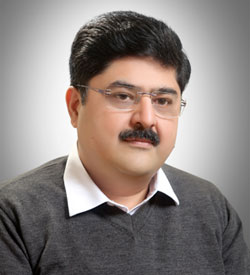Mild to Moderate cases of acne are treated with help of medicines.
After careful assessment of the patient, topical and oral antibiotics are given to the patients.
Exfoliants like Benzoyl peroxide and Adapalene and Face washes are prescribed for home usage.
The skin is cleaned with high pressure water jet rich in Oxygen which clearshe skin of dirt and grime leading to deep pore cleansing.
This is followed by application of blue light mask for 15 minutes which is bactericidal and reduces bacterial counts.
These can be done in all kinds of skin types especially children and adolescents.
Since acne is condition characterised by comedones (black and whiteheads), gentle removal is done by pressing them with Comedone Extractor.
Mild abrasion of skin is done with aluminium oxide crystals or diamond fraises which removes comedones and helps in healing of acne scars.
Alpha Hydorxy Acid (AHA) and Beta Hydroxy Acid (BHA) are two hydroxyl acids, but they vary in terms of lipid (oil) solubility. AHA are water soluble, whereas BHA are oil soluble. They are often used together to form deeper peels.
Derived from natural sources like soy milk (lactic) and sugarcane (glycolic), AHA aids in cell renewal and reducing acne and acne scars. They are mild with no downtime.
BHA (Salicylic peels )on the other hand, are beneficial in clearing blocked pores, refined texture, and eliminating p-acne bacteria. These peels are very effective in controlling active acne.
Yellow peels are primarily retinoid acid based peels that are used for effective acne treatment. It helps improve skin texture and structure while cleansing the skin and providing a lifting effect. Yellow peels essentially remove the epidermal and dermal-epidermal layers of skin.
The duration of application depends on the skin prototype and severity of the treatment. Skin types III, IV, and V require more exposure time and several layers. It is recommended to apply the peel for 30-60 minutes in the first session while repeating the treatment every 7-10 days. The patient must further neutralize it at home with mild soap.
The interval between sessions is decided by the dermatologist. The use of sunscreen and moisturizer is mandatory if sun exposure is unavoidable.
Subcutaneous incisionless surgery (Subscision) is a safe and minor surgical procedure for treating acne scars that leave depressions on the skin. It involves inserting a hypodermic needle through a puncture in the skin surface. The sharp edges under the defect are then manoeuvred to make subcuticular cuts or incisions. The primary principle is to break the fibrotic strands, which tether the scar to the underlying subcutaneous tissue. The releasing action of the procedure lifts the depression.
The treatable area is marked off with a white pencil before subcision is performed under local/ topical anaesthesia (PRILOX ). The procedure is in turn useful for acne scars such as rolling and boxcar scars that are distensible and depressed with gentle sloping. However, it is not as successful for ‘ice pick’ acne scars which look like large, deep pores.
Repeated treatments are required for optimal results while repeat sessions are conducted after a 3-month interval. Patients must apply ice on the operated area on the day of the procedure, while anti-inflammatory drugs must be consumed for 5-7 days if needed.
Fractional CO2 lasers are among the latest advances in non-invasive skin rejuvenation treatments. They have the longest wavelength among all lasers in the market. They typically provides good results for deeper wrinkles, pitted acne scars, and facial lines because the fractional CO2 laser goes deeper than other lasers and shrinks collagen.
Since the heat goes deeper, there is significant downtime in comparison to other lasers.
the treatment is done under application of topical local anaesthesia.
The duration of the treatment may vary according to the affected area, but a full face requires nearly half an hour. Most patients require five treatments to achieve the desired results which are spaced across a month.
Mild redness and burn is felt and seen among most patients immediately after the procedure. The next day patients will witness the development of scaling and the skin will will appear bronzed for three to fourteen days.
There are also chances of flaking as dead skin is replaced by new skin. A moisturiser is thus recommended to treat this. In the additional case of peeled skin, the patient is advised to wash it off once or twice a day.
It is also imperative for patients to protect their skin from the sun exposure for several months. The use of protective clothing like broad-brimmed hats and moisturising sunscreen is recommended.
The treatment appears to be well tolerated by patients. Depending upon their skin condition, patients are encouraged to return to work directly after treatments or the following day.

Consultant Dermatologist & Laser Surgeon View Full Profile